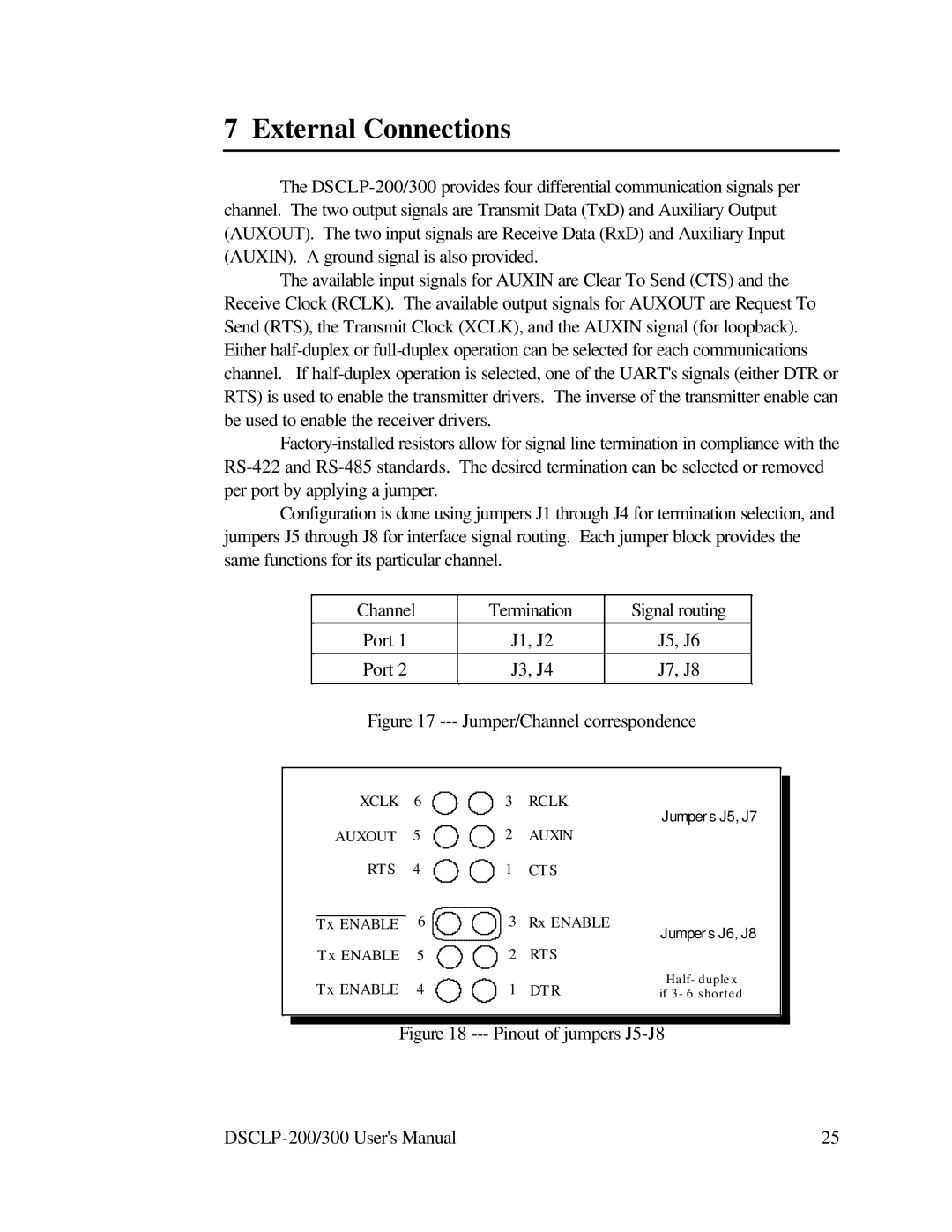
7 External Connections
The
The available input signals for AUXIN are Clear To Send (CTS) and the Receive Clock (RCLK). The available output signals for AUXOUT are Request To Send (RTS), the Transmit Clock (XCLK), and the AUXIN signal (for loopback). Either
Configuration is done using jumpers J1 through J4 for termination selection, and jumpers J5 through J8 for interface signal routing. Each jumper block provides the same functions for its particular channel.
Channel | Termination | Signal routing |
|
|
|
Port 1 | J1, J2 | J5, J6 |
|
|
|
Port 2 | J3, J4 | J7, J8 |
|
|
|
Figure 17 --- Jumper/Channel correspondence
XCLK | 6 | 3 | RCLK | Jumpers J5, J7 |
| 5 | 2 | AUXIN | |
AUXOUT |
| |||
RTS | 4 | 1 | CTS |
|
Tx ENABLE | 6 | 3 | Rx ENABLE | Jumpers J6, J8 |
|
|
|
| |
Tx ENABLE | 5 | 2 | RTS |
|
Tx ENABLE | 4 | 1 | DTR | |
if |
Figure 18 --- Pinout of jumpers J5-J8
25 |
